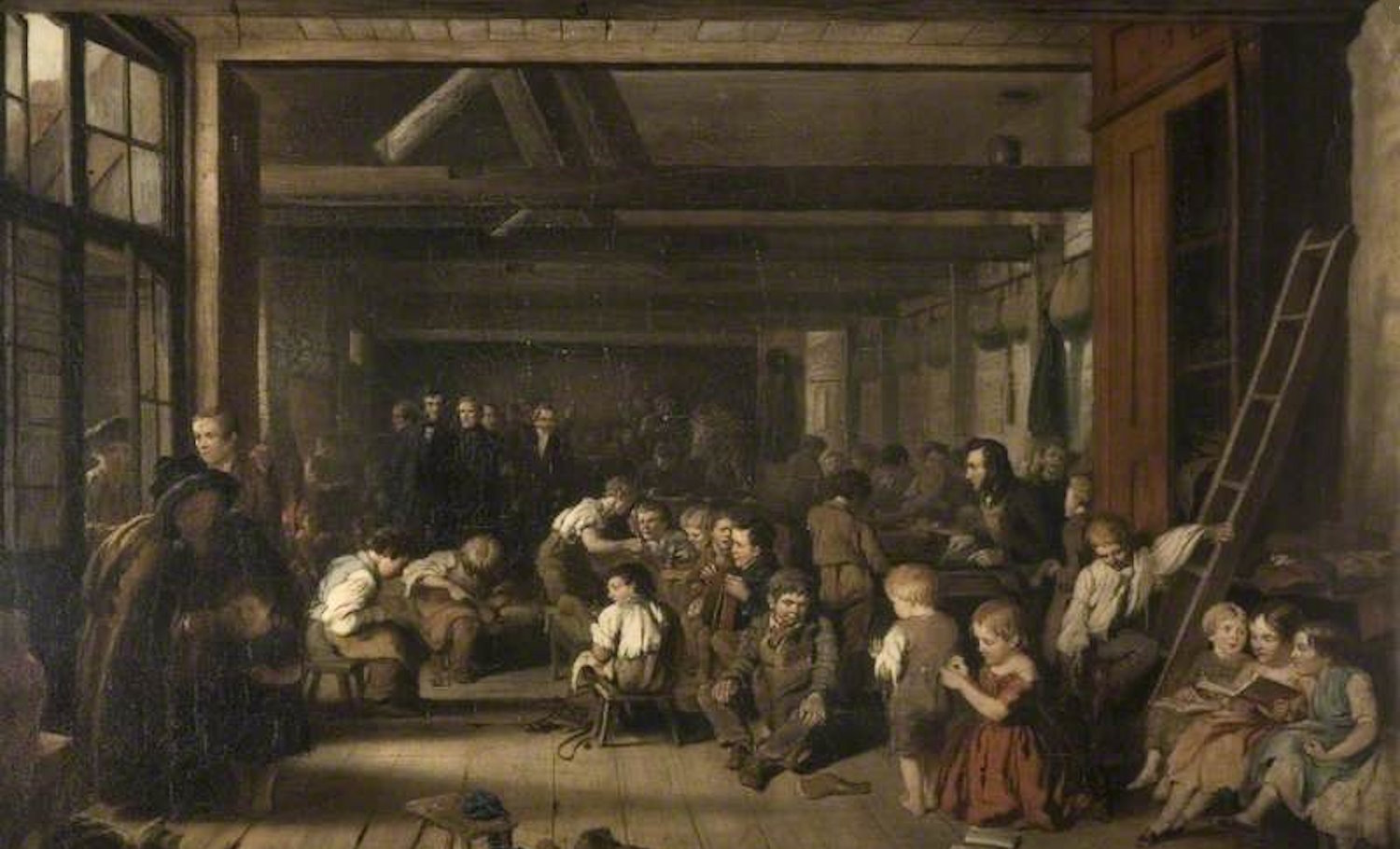Opening picture: Alexander Blaikley – The First Ragged School, Westminster; Birmingham Museums Trust – public domain via Wikimedia Commons.
Thomas Pelham and boys’ clubs. Writer of the first handbook on boys’ club work, T. W. H. Pelham had worked in ragged schools, institutes and clubs and helped to found the London Federation of Working-boys’ Clubs (now London Youth).
 The Hon. Thomas Henry William Pelham (1847-1916) was the son of the third Earl of Chichester (who was President of the Church Missionary Society). Pelham went to Eton and there formed strong friendships with a number of people who were key to the development of the boys’ club movement. This group included Quintin Hogg and Arthur Kinnaird (Hogg 1904: 34). He graduated from Trinity College, Cambridge and came to London in the late 1860s. Pelham became involved in the work that Quintin Hogg was undertaking in Of Lane and then, according to Eagar (1953: 251), threw himself into the work of Hogg’s Castle Street Home and School (and later the Youths’ Institute on Long Acre). He was called to the Bar (being admitted to the Inner Temple in 1871), and, ‘after conducting several inquiries on the Government’s behalf, was taken into the Civil Service. He married in 1883 (Louisa Keith Brice) and quickly had three children. As Head of the Harbours and Fisheries Board he was invested as a Companion, Order of the Bath (C. B. (Eagar 1953: 244)
The Hon. Thomas Henry William Pelham (1847-1916) was the son of the third Earl of Chichester (who was President of the Church Missionary Society). Pelham went to Eton and there formed strong friendships with a number of people who were key to the development of the boys’ club movement. This group included Quintin Hogg and Arthur Kinnaird (Hogg 1904: 34). He graduated from Trinity College, Cambridge and came to London in the late 1860s. Pelham became involved in the work that Quintin Hogg was undertaking in Of Lane and then, according to Eagar (1953: 251), threw himself into the work of Hogg’s Castle Street Home and School (and later the Youths’ Institute on Long Acre). He was called to the Bar (being admitted to the Inner Temple in 1871), and, ‘after conducting several inquiries on the Government’s behalf, was taken into the Civil Service. He married in 1883 (Louisa Keith Brice) and quickly had three children. As Head of the Harbours and Fisheries Board he was invested as a Companion, Order of the Bath (C. B. (Eagar 1953: 244)
Like Maude Stanley within the girls’ club movement, he had been heavily involved in local work in central London and in his writing and organizing he parallels her achievements. With Arthur Kinnaird he founded the Homes for Working-boys in London in 1870. He also helped to develop and argue for others forms of work with boys and young men and sat on many committees including the London Playing Fields Association, the Borstal Association, and inevitably given his friendship with Hogg, the Regent Street Polytechnic.
In his (1889) book Pelham charts the development of boys’ club and institute work – especially noting the expansion of work in London (over a period of twenty years the number of parochial institutes and clubs had expanded from not more than 20 to over 300). Pelham was a strong advocate of ‘small, local Institutes, which should never be allowed to outgrow the personal influence of the workers’ (quoted by Eagar 1953: 240). ‘Personal influence’, he stressed, ‘is one of the first conditions of success’. He believed that clubs and institutes should be open every week-night and should be held in premises that were made bright and comfortable. Unfortunately, too many clubs were held in rooms that, according to Pelham, were too much like third-class railway waiting rooms. As Eagar (1953: 241) comments, it may be assumed that Pelham’s emphasis on personal influence ‘implied some criticism of the recently founded Manchester Clubs with their membership rolls of several hundreds (see C. E. B. Russell).
Tom Pelham was described by Dean Farrar in his preface to the Handbook to Youths’ Institutes and Working Boys’ Clubs (Pelham 1889) as ‘one of those men who for many years has devoted himself heart and soul to the important work of providing for the recreation and meeting the spiritual needs of the youths of our great cities’. Eagar (1953: 244) comments ‘he gave his time unstintingly to the boys, and to every cause for their good. He had the precious quality of being as ready to back someone else’s work as willing to spend himself on his own’.
Further reading and references
Eagar, W. McG. (1953) Making Men. The history of Boys’ Clubs and related movements in Great Britain, London: University of London Press. 437 pages. Includes a very helpful appreciation of Pelham plus material on Hogg, Russell and others.
Hogg, E. M. (1904) Quintin Hogg. A biography, London: Archibald Constable and Co. 418 pages. Makes a number of references to Pelham.
Pelham, T. H. W. (1889) Handbook to Youths’ Institutes and Working Boys’ Clubs … With preface by … Archdeacon Farrar … With a list of Societies, institutes and clubs for young men and boys in the Diocese of London, London: London Diocesan Council for the Welfare of Young Men. 64 pages. A second edition appeared in 1890 entitled ‘Boys Clubs’ and was published by Rivingtons. The only copies I can locate are in the British Museum (Eagar 1953 had a similar problem – see footnote on page 243).
Acknowledgements: Family dates and details courtesy of thePeerage.com (and Burke’s Peerage and Baronetage, 107th edition).
Opening picture: Alexander Blaikley – The First Ragged School, Westminster; Birmingham Museums Trust – public domain via Wikimedia Commons. We believe the picture of Thomas Pelham to be in the public domain because the copyright has expired.
Prepared by Mark K. Smith and largely based on material in Eagar (1953).
